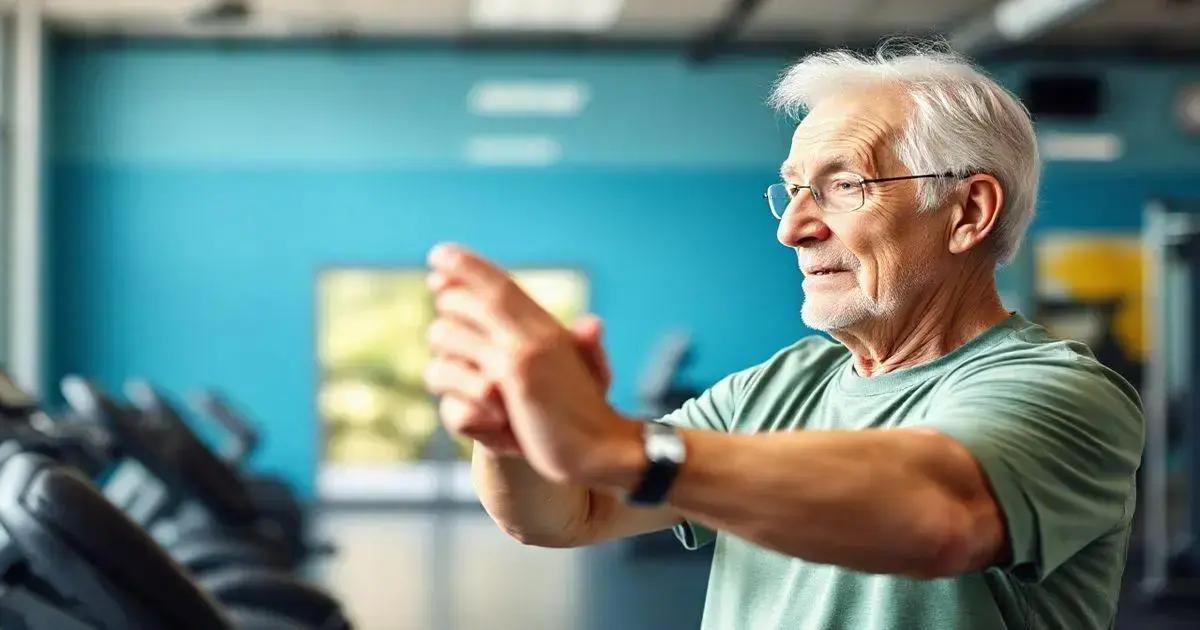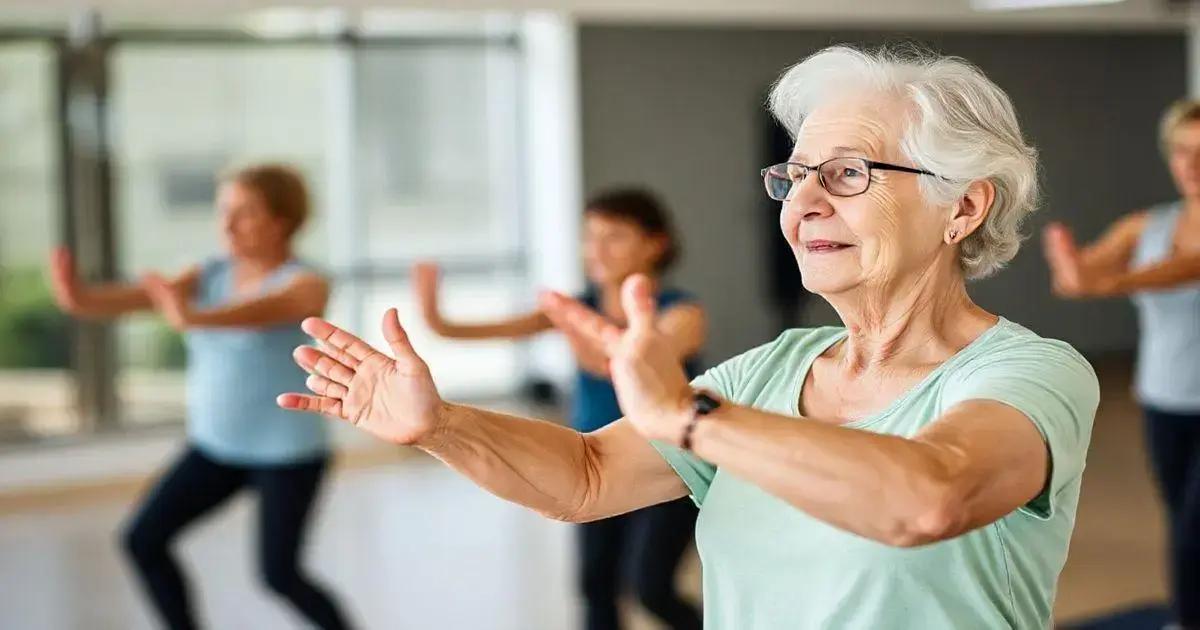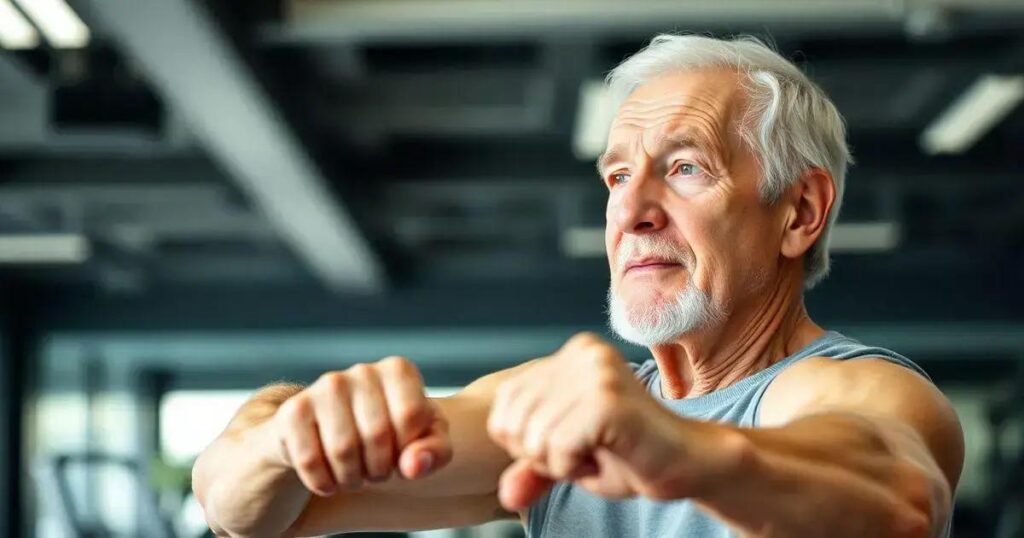The importance of mind-muscle connection in aging fitness lies in its ability to enhance strength, coordination, and overall workout effectiveness while reducing injury risk. Techniques to improve this connection include focused movements, visualization, and incorporating mindful practices into regular exercise routines.
As we grow older, maintaining physical fitness becomes increasingly vital. A key aspect often overlooked in aging fitness is the mind-muscle connection. This fundamental idea emphasizes the importance of focusing on specific muscle groups during workouts. Not only does this technique improve workout effectiveness, but it also enhances safety and reduces the risk of injury. In this article, we’ll dive deep into understanding the mind-muscle connection, its benefits for aging adults, effective techniques to enhance it, and how to seamlessly integrate these practices into your fitness routine.
Understanding Mind-Muscle Connection

The mind-muscle connection is a crucial concept in fitness that signifies the relationship between your brain and the muscles you’re working. Understanding this connection can significantly enhance your workout efficiency, particularly for aging adults who may face unique physical challenges.
What is Mind-Muscle Connection?
Essentially, the mind-muscle connection is about focusing your awareness on the specific muscles you are exercising. This mental engagement helps to activate those muscles more effectively. Instead of just going through the motions, concentrating on muscle contraction and control leads to better results.
How It Works
When you consciously direct your thoughts to a muscle group while exercising, it draws more neural pathways to that area. This activation improves muscle recruitment—meaning more muscle fibers are engaged efficiently during your workouts. For older adults, this can also mean improved coordination and stability.
The Benefits of a Strong Mind-Muscle Connection
For someone in the aging population, enhancing the mind-muscle connection can lead to several benefits. It may promote better balance, enhance proprioception, and increase overall strength. Additionally, focusing on form and technique becomes easier, which can prevent injuries during workouts.
The importance of the mind-muscle connection cannot be overstated. It is not just about lifting weights or doing exercises; it’s about making each movement purposeful. As you age, embracing this practice will allow you to maintain a high quality of life while staying fit and active.
Benefits for Aging Adults

As we age, maintaining our health and well-being becomes increasingly important. The mind-muscle connection offers several benefits specifically for aging adults. These benefits can lead to a more active and fulfilling life.
Enhanced Strength
One of the primary benefits of focusing on the mind-muscle connection is improved strength. By actively engaging your muscles, you can optimize every movement. This is particularly essential for older adults, as maintaining strength can help with daily tasks and reduce the risk of falls.
Improved Coordination and Balance
Engaging your mind during workouts increases coordination and balance. As we age, these skills typically decline. However, by practicing the mind-muscle connection, older adults can enhance their stability and prevent accidents.
Greater Muscle Activation
Aging often leads to muscle loss, known as sarcopenia. By focusing on the mind-muscle connection, seniors can activate more muscle fibers during their workouts. This results in better muscle maintenance and growth, combating age-related muscle decline.
Injury Prevention
With increased awareness of muscle engagement, the risk of injury can decrease significantly. Older adults are especially prone to injuries from improper movements. The mind-muscle connection promotes proper form and technique, leading to safer exercises and lower injury rates.
Additionally, this focus can enhance overall enjoyment during workouts. Recognizing and feeling the efforts of your body creates a fulfilling experience, making it easier to stick with a consistent fitness routine.
Techniques to Enhance Connection

To truly enhance the mind-muscle connection while exercising, there are various techniques that aging adults can employ. These methods help to deepen the bond between the brain and the muscles, ensuring a more effective workout.
1. Slow Down Your Movements
Pacing your exercises slowly can enhance control and awareness. When you slow down, it becomes easier to concentrate on the muscles being engaged. By taking your time, you can focus more on the contraction and relaxation of each muscle group.
2. Visualize the Muscles
Before starting an exercise, take a moment to visualize the specific muscles you will be working. Imagine them contracting and stretching. This mental imagery can boost your focus and increase muscle engagement during the workout.
3. Use Isolation Exercises
Incorporating isolation exercises into your routine can significantly help strengthen the mind-muscle connection. These exercises target specific muscle groups, allowing you to concentrate fully on the muscles being exercised. Examples include bicep curls, leg extensions, and tricep kickbacks.
4. Incorporate Breathing Techniques
Pairing focused breathing with movements can enhance the connection. For example, exhale on exertion during lifts and inhale when returning to the starting position. This helps to synchronize your body movements with your breath, enhancing overall awareness.
5. Reflect on Your Workout
After your exercise session, take a few moments to reflect on what muscles you engaged and how they felt. Keeping a workout journal or talking about your feelings helps solidify your connection, making it easier to focus next time.
Regular practice of these techniques can lead to stronger muscle activation, improved performance, and a more enjoyable workout experience for aging adults.
Integrating Mind-Muscle Practices into Fitness

Integrating mind-muscle practices into your fitness routine can dramatically improve your results. By focusing on the connection between your brain and your muscles, you can enhance your workouts and maintain a healthier lifestyle. Here are several strategies to help you get started.
1. Warm-Up with Intention
Begin each workout with a proper warm-up focusing on the muscles you plan to train. Spend time engaging and visualizing these muscles during stretches. This prepares both your body and mind for the session ahead.
2. Include Mindful Movements
Incorporate exercises that emphasize control and focus, such as yoga or Pilates. These workouts enhance flexibility and core strength while encouraging a stronger mind-muscle connection. This approach is especially beneficial for aging adults looking to improve balance and coordination.
3. Set Specific Goals
Establish clear, achievable goals for each workout. For example, aim to increase the weight lifted or the number of repetitions. By having specific targets, you can concentrate on how your muscles feel during the exercise, which reinforces the mind-muscle connection.
4. Utilize Strength Training
Implement strength training into your regular fitness routine. Focus on controlled movements and proper form. The goal is not just lifting weights but being aware of how each muscle works throughout the motion, enhancing your overall engagement.
5. Cool Down and Reflect
Conclude your workouts with a cool-down period. Use this time for mindful stretching and reflection. Consider how your body felt throughout the exercise and recognize the muscles that were engaged. This practice reinforces the mind-muscle connection for future workouts.
By actively integrating these practices into your fitness regimen, you can develop a deeper understanding of your body while experiencing improved strength, coordination, and enjoyment in your workouts.
Embracing the Mind-Muscle Connection for a Healthier Life
The mind-muscle connection is more than just a fitness technique; it is a key element in enhancing workout efficiency, especially for aging adults. By focusing on this connection, individuals can experience greater strength, improved coordination, and reduced risk of injury.
Integrating practices that emphasize mindfulness and awareness into your routine will not only enhance your physical performance but also enrich the overall experience of exercising. As you progress, remember to set clear goals, practice mindful movements, and continuously reflect on your workouts.
Ultimately, developing your mind-muscle connection can lead to a healthier, more active lifestyle, paving the way for improved quality of life as you age. So, embrace this journey in fitness, and unlock the potential that lies within you.
FAQ – Frequently Asked Questions about the Mind-Muscle Connection in Aging Fitness
What is the mind-muscle connection?
The mind-muscle connection refers to the awareness and focus on a specific muscle group during exercises. It enhances muscle activation and workout effectiveness.
Why is the mind-muscle connection important for aging adults?
For aging adults, the mind-muscle connection improves strength, coordination, and balance while reducing the risk of injuries during workouts.
How can I enhance my mind-muscle connection?
You can enhance it by using techniques like slow movements, visualization, practicing isolation exercises, incorporating breathing techniques, and reflecting on your workouts.
What are some examples of exercises that promote the mind-muscle connection?
Isolation exercises like bicep curls, leg extensions, and tricep kickbacks are excellent for promoting the mind-muscle connection by targeting specific muscle groups.
Can mind-muscle practices be integrated into a fitness routine?
Yes, integrating mindful practices like intentional warm-ups, mindful movements, and proper goal setting can improve the overall effectiveness of your fitness routine.
How does mindfulness in workouts improve performance?
By focusing on the muscles being worked, you increase awareness and activation, leading to better performance, improved strength, and a lower risk of injury.












